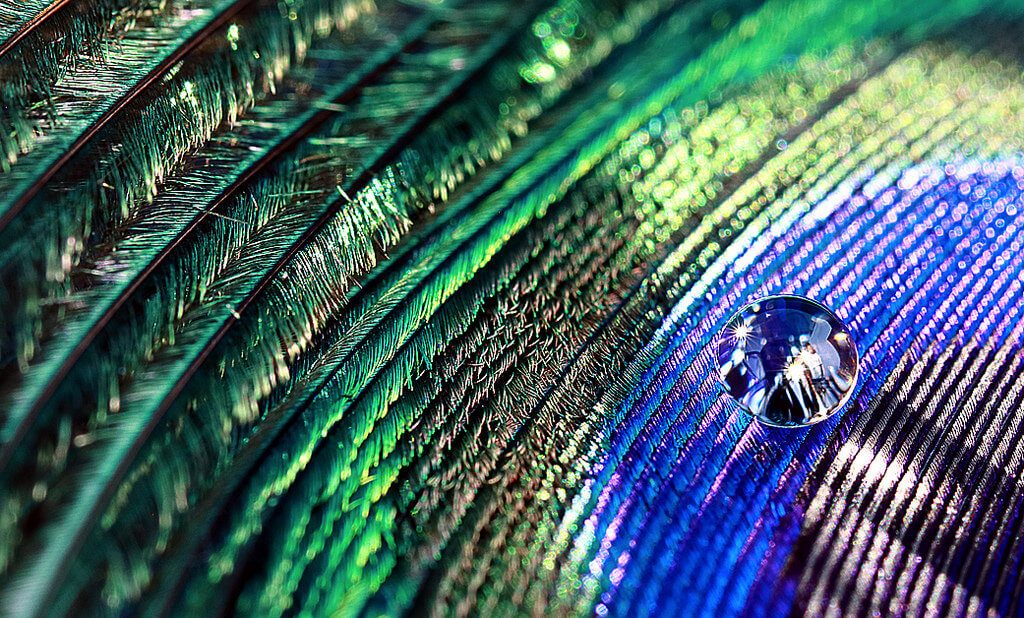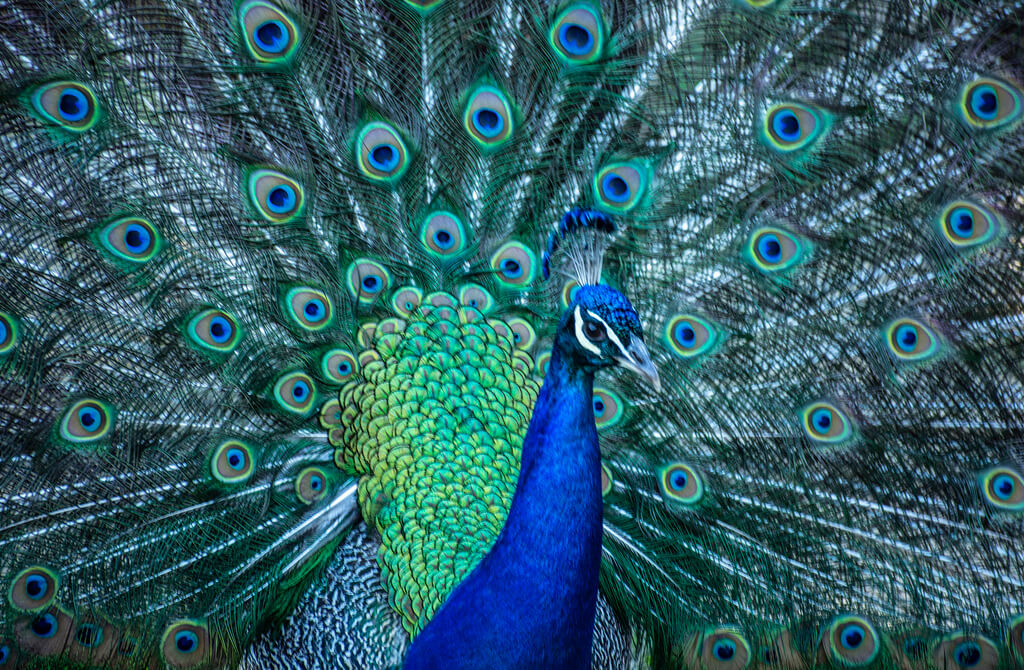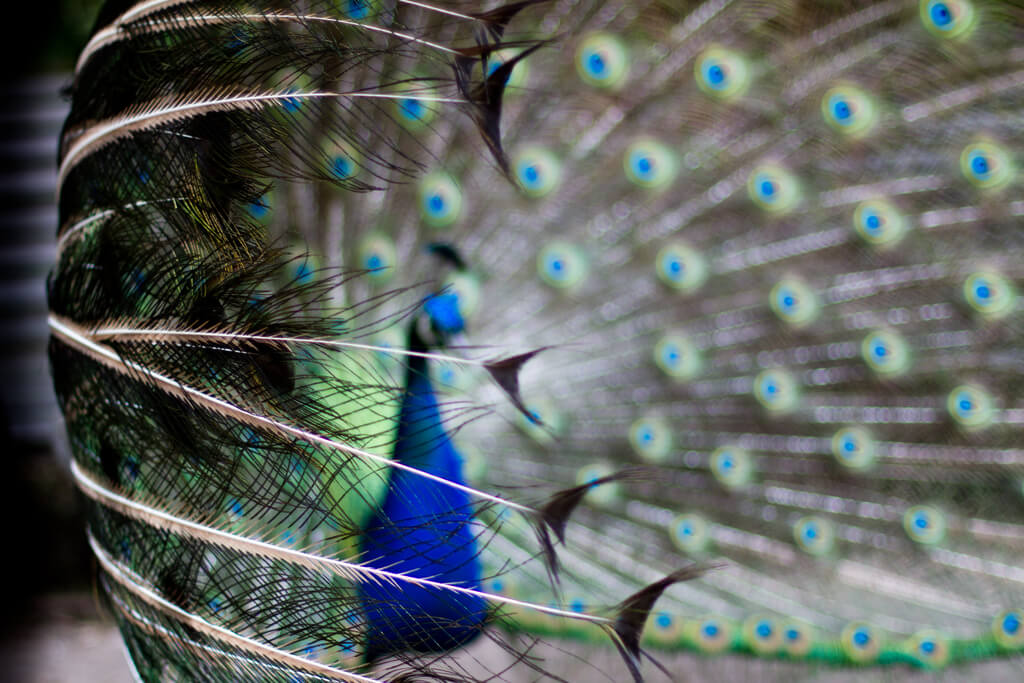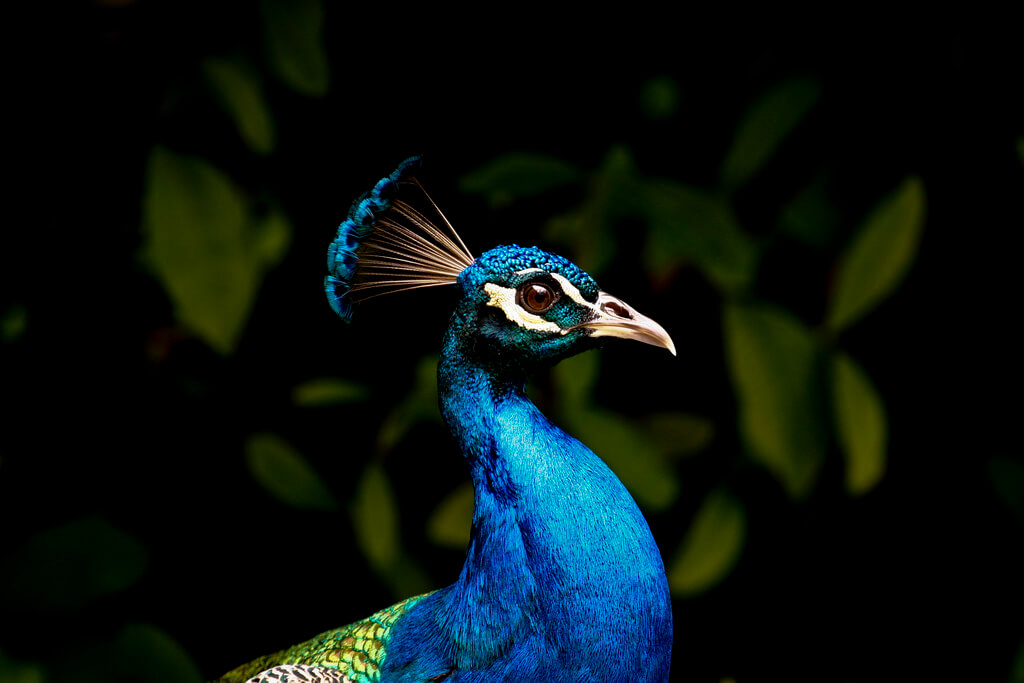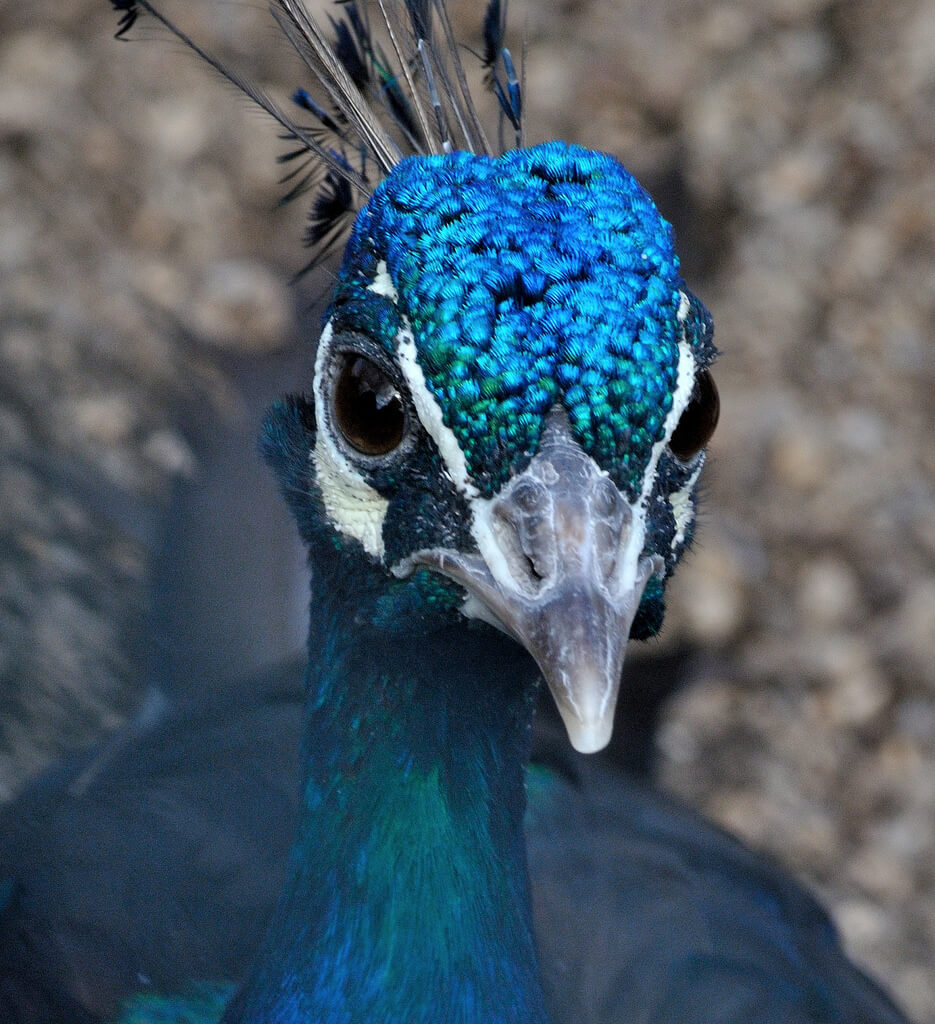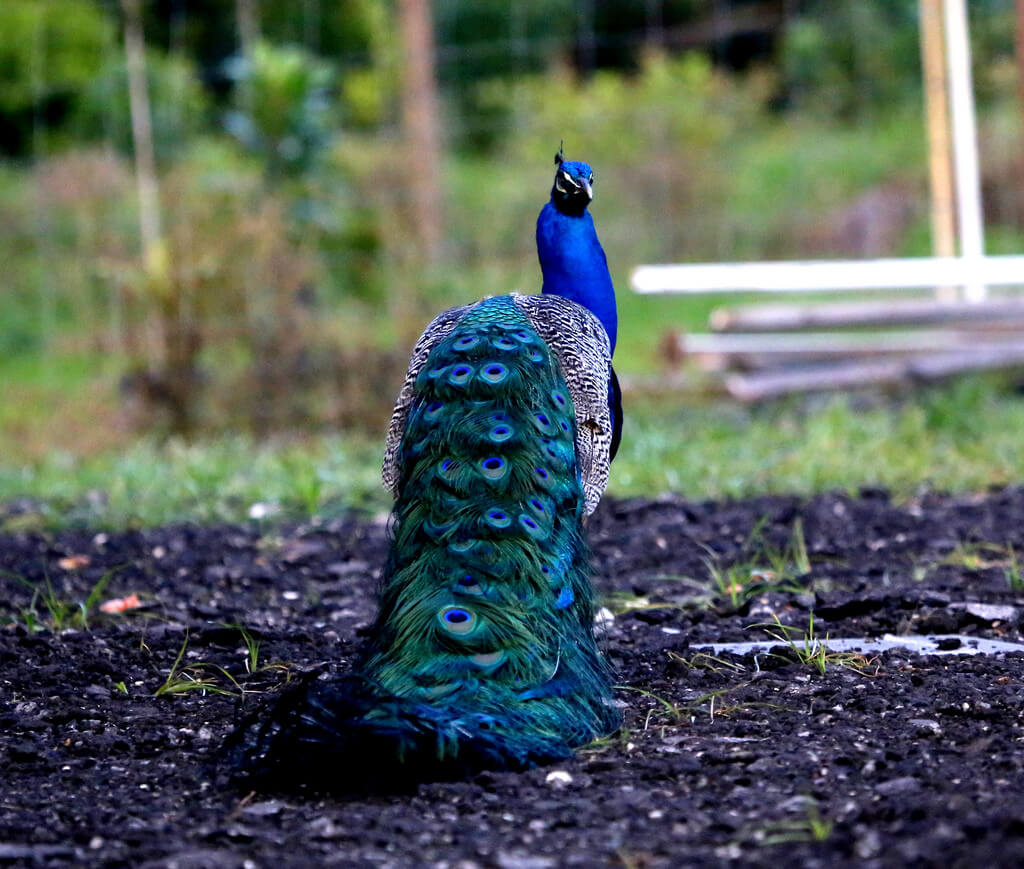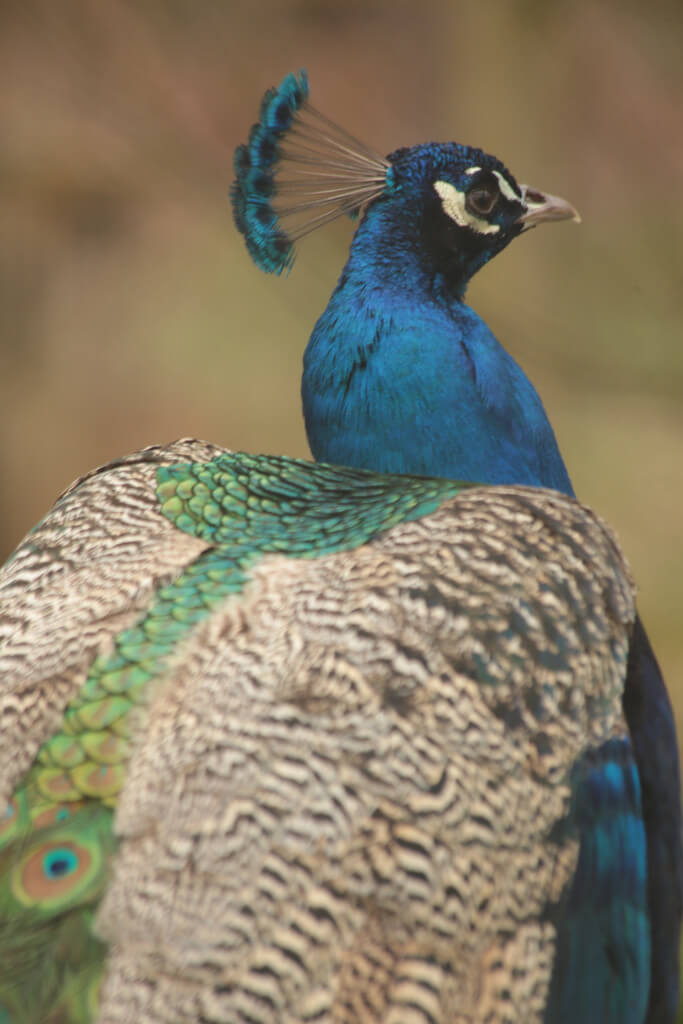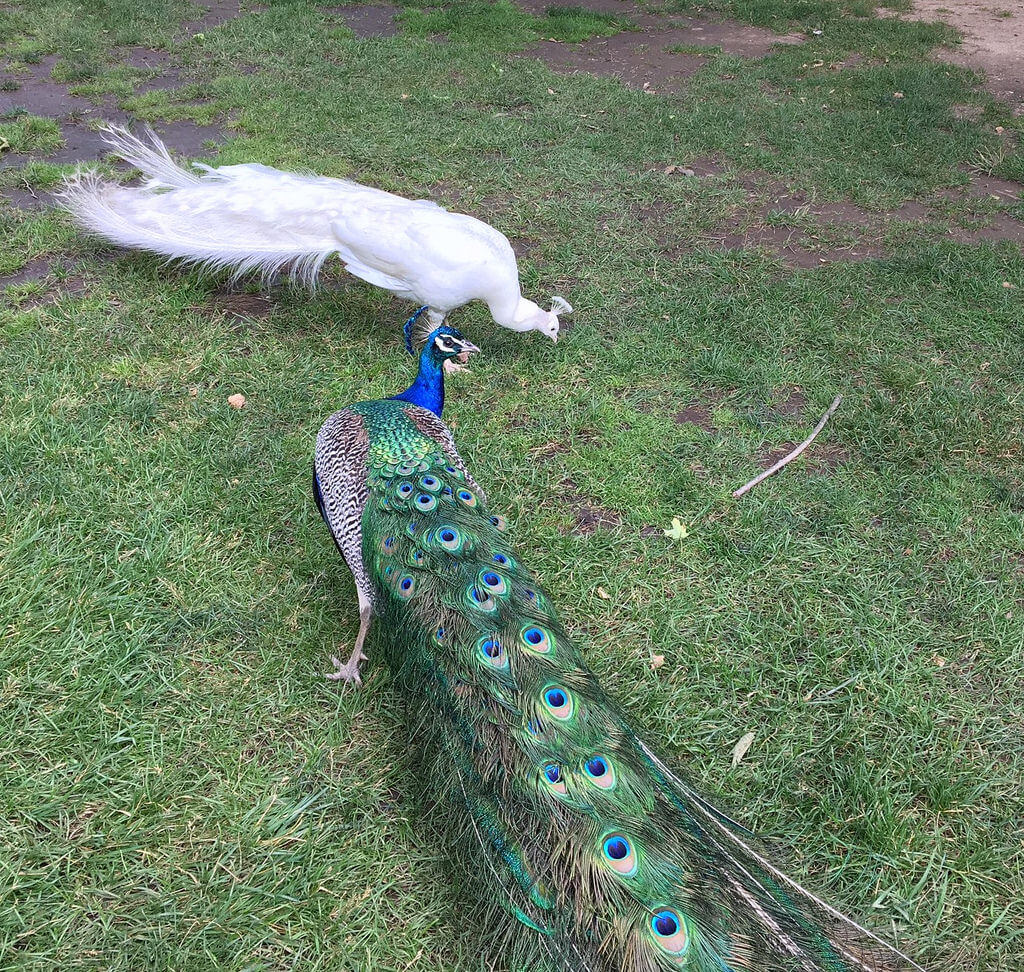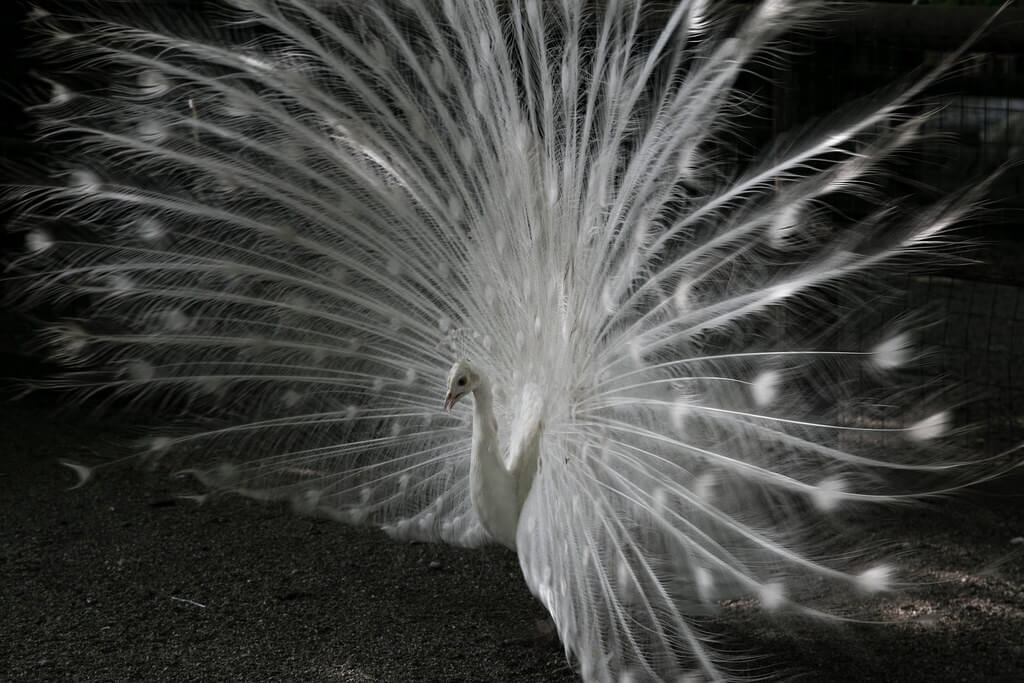Sometimes, the most beautiful subjects – like peacocks, sunsets, and mountaintop views – are the hardest to photograph. Unlike mundane subjects, which can become beautiful through photography, breathtaking subjects rarely look more beautiful in a photo. At most, you capture only a piece of the beauty and hope others will be able to imagine the rest.
This challenge to capture the beauty you see can be a huge motivation or a constant source of disappointment. You may look at your photo and think, “Yes! That’s it!” Or you may feel frustrated and think, “No, it’s not beautiful enough.”
If you’re new to photography, you might think this frustration has to do with being a beginner, but in fact, even professionals get frustrated when photographing beautiful subjects. Even if their photos are stunningly beautiful, they’re still photos. They can’t replace the real thing.
So how can you cope with this frustration? Besides practicing photography techniques like these, you can change your approach to photographing beauty. Instead of trying to get an image that’s equally or more beautiful, admit that you can’t compete with the real thing. You can’t capture the full beauty. All you can do is focus on one aspect, one piece of the beauty you want others to notice.
This might feel like giving up at first because you’re essentially saying, “I can’t photograph all of this.” But in fact, admitting your limitations can be liberating. You free yourself to be more creative and experiment without feeling like you failed.
Which brings us to peacocks. Regarded as one of the most beautiful birds, peacocks can be frustrating to photograph because there’s so much to capture. Their lovely feathers, bright colors, and elegant behavior can be hard to convey in a single photo.
So don’t. Keep your photo simple. Focus on one idea or element you want to photograph, and forget about the rest. Capture one piece of the peacock’s charm – just one – and that alone will make your photo lovely.
Beautiful Peacock Images and Ideas
Despite their elegance, peacocks are still wild birds. And like any wildlife, you need a lot of patience to get good shots of them. Along with the ideas below, check out these 10 Tips for Better Wildlife Photography to ensure you get the best photos.
Photograph their feathers in full display.
For many people, the most stunning part of a peacock is their train of feathers. When fanned out, these feathers can be mesmerizing. You may have to wait a while to see it, but your patience will be paid off with a gorgeous photo opportunity.
Some photographers try to capture the full display of peacock feathers by backing up or zooming out, so that all the feathers are in the frame. But this distant perspective can actually make the feathers look smaller and less impressive. It also makes the background more important, distracting viewers away from the peacock.
For these reasons, it’s better to take a close-up, using the feathers as a frame around the peacock’s body. You won’t get all the feathers in the frame, but you’ll create a more striking image.
Carlos Andrés Reyes – Yes your majesty
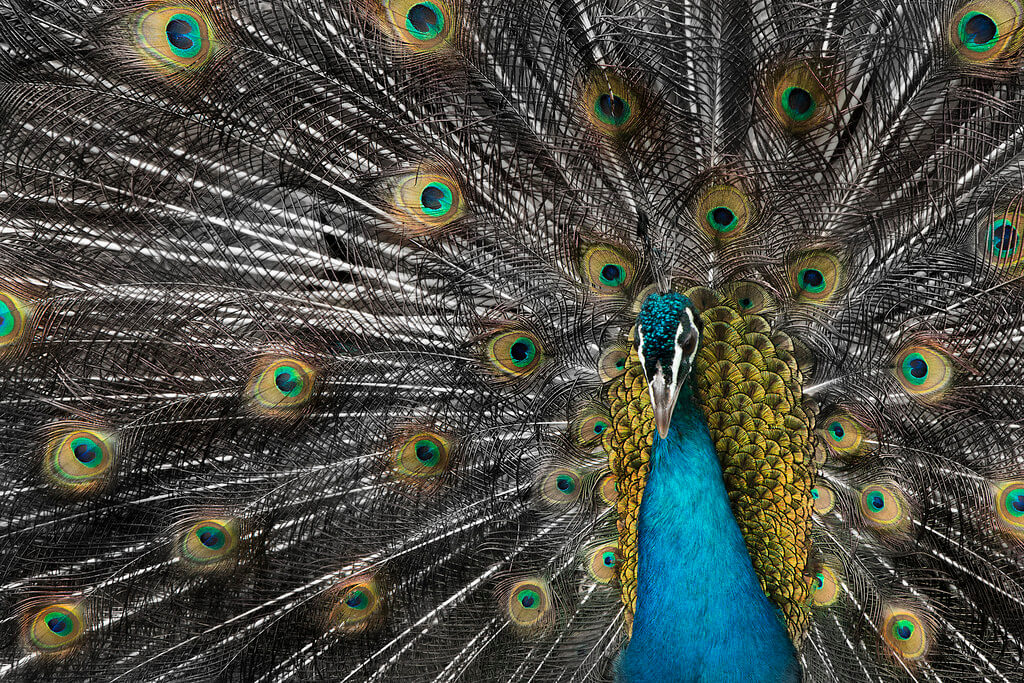
Charles Patrick Ewing – Peacock & Plumage Portrait
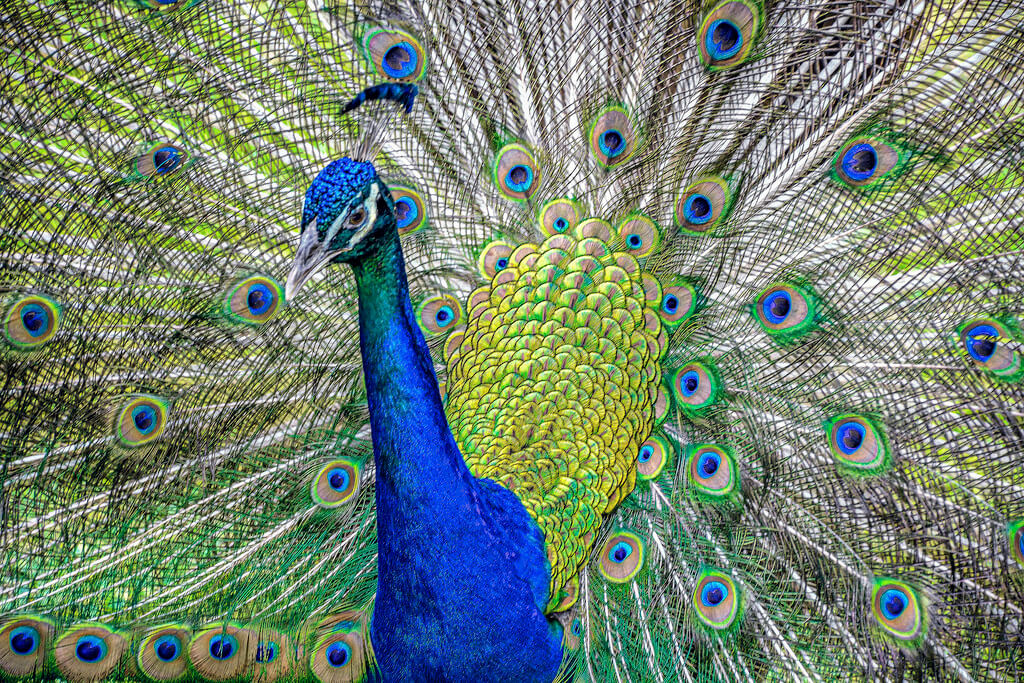
Vivek Doshi – Blending 
Take a head shot.
If the peacock isn’t spreading its feathers and you’ve run out of patience, no worries! You can still get a cool close-up of the peacock’s head crested with feathers. This composition also works well with female peacocks, known as peahens.
To make this shot interesting, your best bet is to capture eye contact with the birds. Eye contact is important for all wildlife photography, but especially when you’re taking a close-up. It creates a connection between the viewer and the subject, making your image stand out.
Amine Fassi – She said : “Pff, he believes I am a turkey from PIXOTO? !! To charm me, it is necessary to take time deluding my feathers ! ”
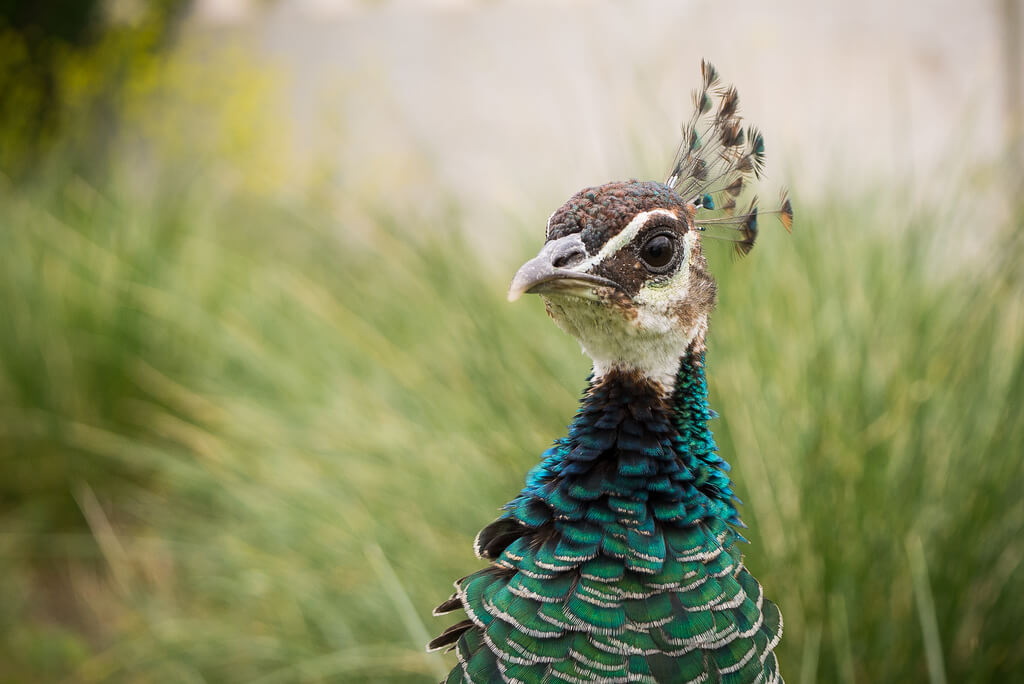
Take a photo from behind.
This is another way to get a nice photo of a peacock that’s not fanning its feathers. Even when folded up, the peacock’s train can look beautiful from behind as it trails on the ground. You can stand back to show the peacock in its environment or take a close-up to bring out more details. Like a bride’s train on her wedding day, the elaborate feathers drape down to the floor with beauty and grace.
CindiKPhotography – Come sit down beside me honey, let’s have a little heart to heart. Now look at me and tell me darling, how badly do you want this part?
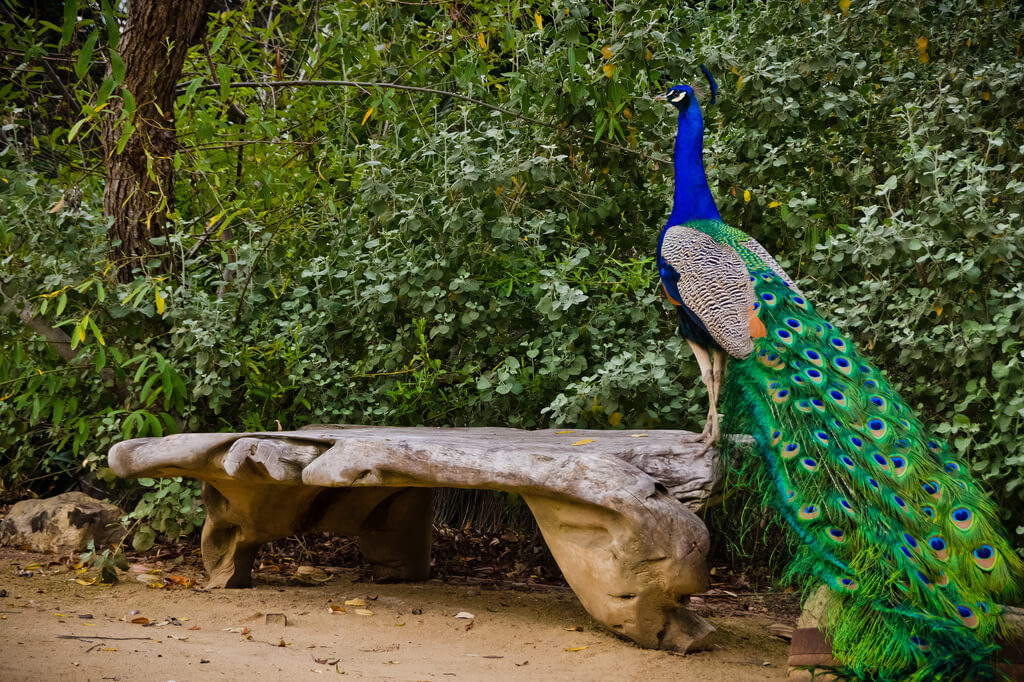
Marco Verch – Peacock body feathers

Find a white peacock to photograph.
Mistakenly called albino peacocks, white peacocks are typically not albino. Rather, they have leucism, a genetic condition that prevents their plumage from developing color. Unlike albinos, leucistic peacocks do produce pigment, just not in their feathers, so their eyes are blue-gray instead of red or pink.
Though white peacocks aren’t necessarily more beautiful, they are more unique. Because white peacocks are less common, photos of white peacocks are interesting simply because the subject is rarer.
Besides, you can get different compositions with a white peacock due to its lack of color. Unlike a “normal” peacock, a white peacock stands out against a green background. It also shines bright in the sun, as the light illuminates its white feathers.
lensnmatter – the white peacock!

Combine beauty with humor.
Because peacocks have a reputation for elegance and beauty, you can create funny photos by capturing anything that contradicts this reputation. Peacocks have quirky behavior you can catch if you watch them long enough. But even if they’re not acting silly, you can create humor by juxtaposing the peacock with something ordinary or unexpected, like a crosswalk.
Amy Collier – Peacock crossing
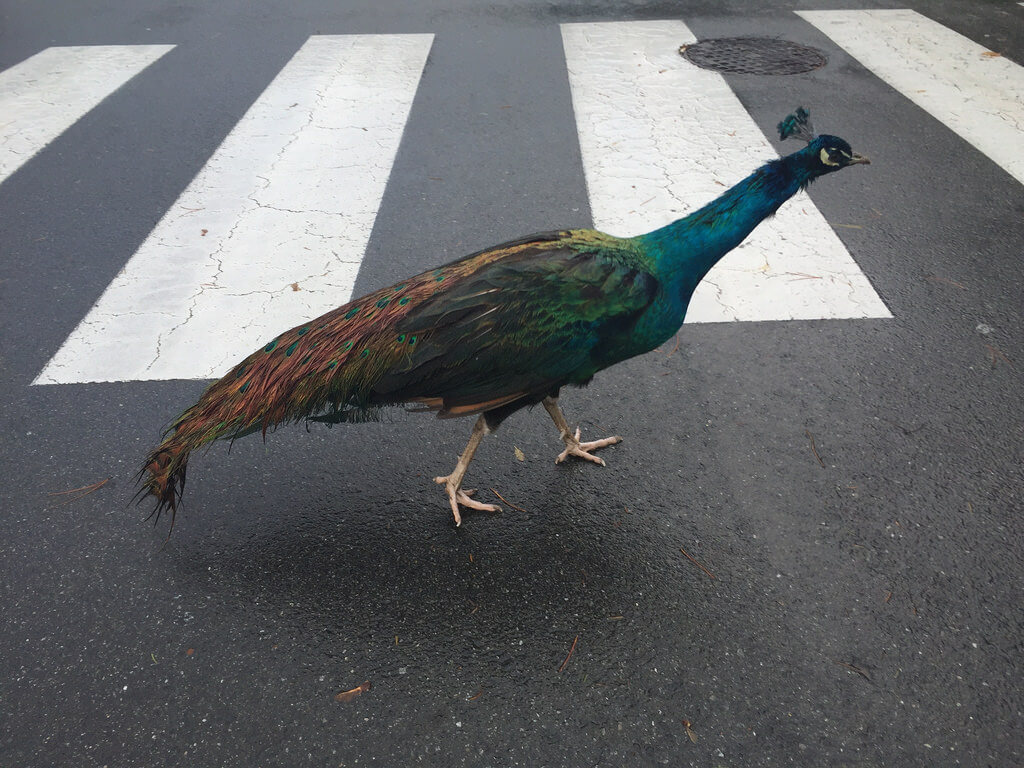
Alexander Day – Man in the Mirror
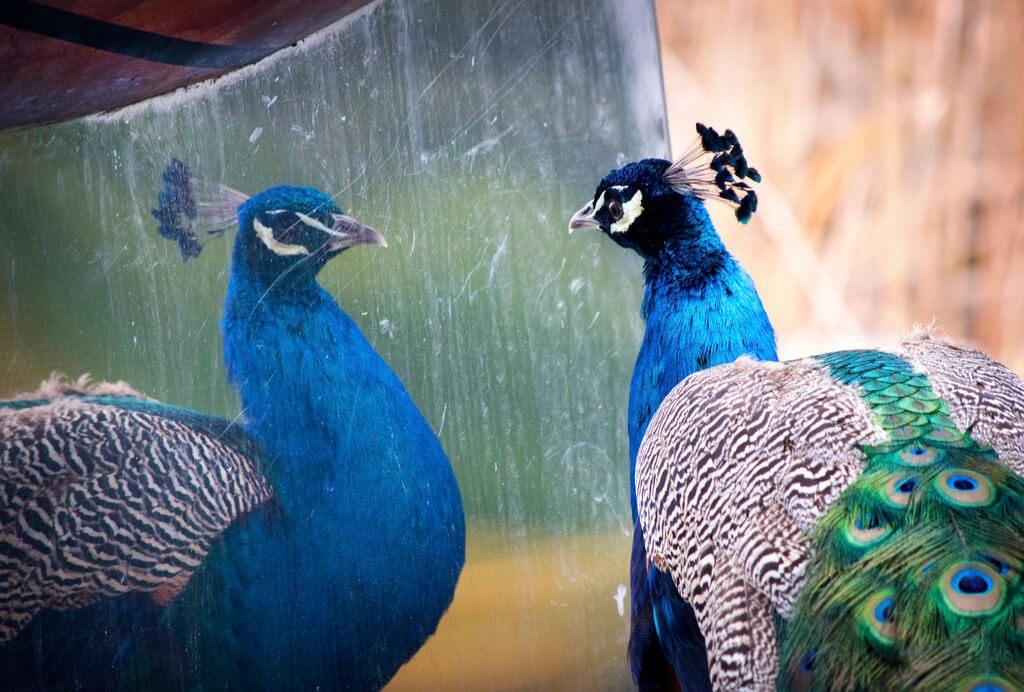
Amine Fassi – Love is in the air
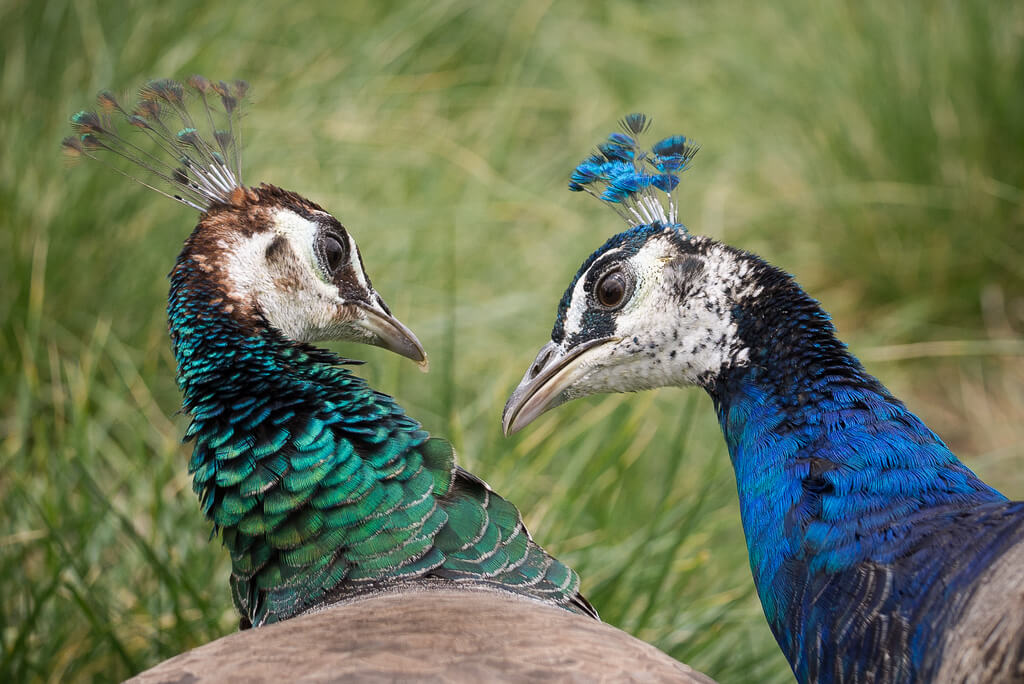
Capture a peacock in with a isolated composition.
Standard photographic compositions apply when photographing birds like Peacocks. Add beauty and interest to the scene by capturing a peacock alone, isolated in the scene, such as the one below.
Viktor Shimin – Isolated peacock
Settle for peacock feathers without the peacock.
No peacocks in your area? No problem – you can buy peacock feathers and take your time photographing them at home. A still life photo with peacock feathers might be easier than tracking down and photographing a live peacock, and you’ll still capture a piece of their beauty.
Noel Reynolds – Peacock feathers

Kate Kend – Strength in Defending
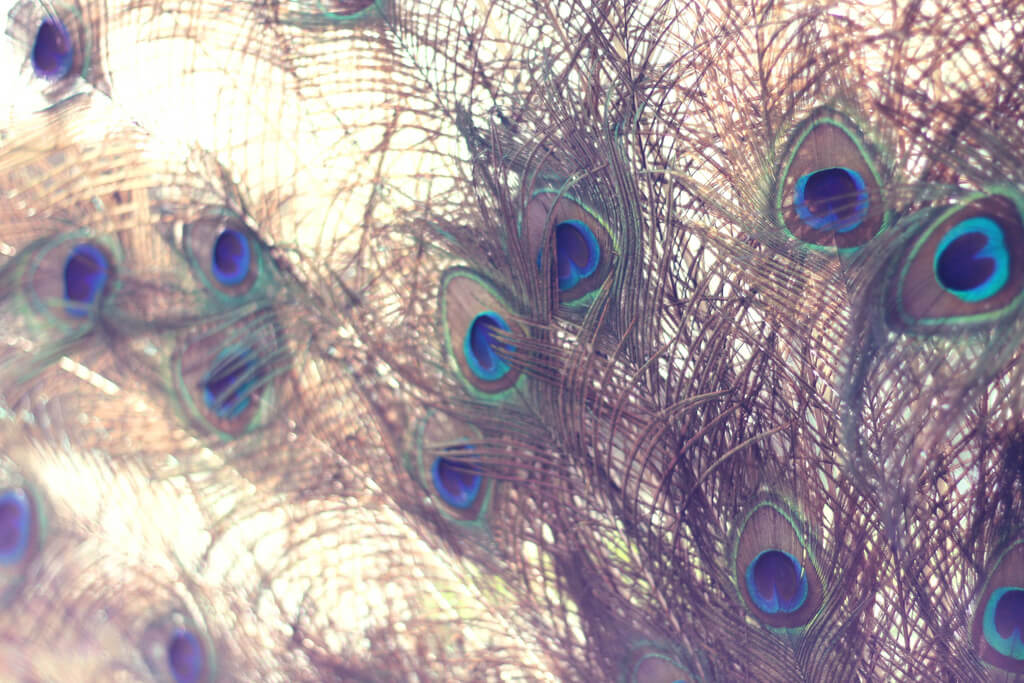
Mathieu Perrier – Close Up Symmetry

Sue Corbisez – Feather Droplet
